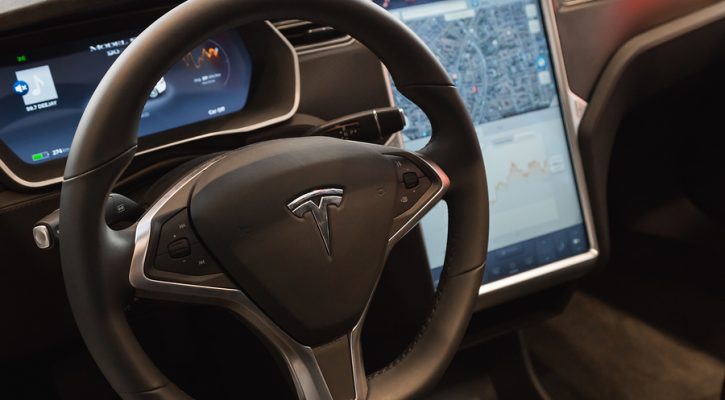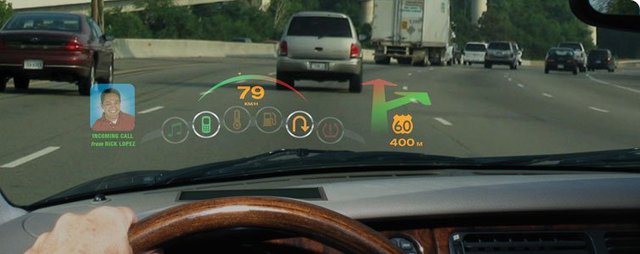Tag Archive: Driver distraction

Tesla Autopilot Car Crash Kills Driver
July 5, 2016
In the first crash of its kind, a Tesla automobile with its “Autopilot” engaged was involved in a crash that killed its owner. According to Tesla, “this is the first known fatality in just over 130 million miles where Autopilot was activated.” While there are a lot of lessons to be taken from this crash, the first lesson to know and understand is that, in spite of the name, the Autopilot system does not make the Tesla an autonomous, self-driving car.
While the news about the crash was just released last week, the crash actually happened on May 7, 2016. The Tesla was nearing an intersection as a tractor-trailer was making a left turn. The Tesla failed to stop and drove under the trailer with the windshield impacting the bottom part of the trailer. Tesla engineers feel that the Autopilot’s brakes failed to engage because the camera failed to distinguish between the bright sky and the large white side of the trailer. Adding to the problem, the trailer’s height may have fooled the camera into believing the road was clear ahead.
The Tesla camera’s inability to distinguish white paint from a clear blue sky poses a major problem. The camera is a black and white camera that can only distinguish between black, white, and various shades of gray. It has been suggested that, if the system had used Lidar (laser based radar) instead, the colors wouldn’t have mattered.
Tesla’s Autopilot system is actually a “driver-assist” system that includes, among other things, an active cruise control that maintains the posted speed limit and automatically applies the brakes when it gets too close to a vehicle ahead. The cruise control uses data from on-board cameras and road maps to maintain position and speed. There’s also a lane departure system that automatically keeps the car within its lane as long as the cameras can detect lane marking lines. The vehicle also has the ability to automatically parallel park.
Even when working together, these systems don’t make the vehicle truly autonomous or self-driving. In fact, the vehicle is set to manual driving by default and, when the Autopilot system is engaged, the driver has to acknowledge a message that says the Autopilot is an assist program and drivers must keep their hands on the wheel at all times.
There is evidence that the driver of this vehicle hadn’t been paying attention to the road and may, instead, have been watching a movie. If he had been paying attention and kept his hands on the wheel, he should have been able to stop the car in plenty of time to avoid the collision.
The name “Autopilot” may have fooled a lot of drivers and there are many examples on Youtube of Tesla drivers treating the Autopilot system as if it were a self-driving system. One Youtube video shows a Tesla driver asleep at the wheel in stop-and-go traffic.
Several vehicle manufacturers such BMW, Mercedes, and GM offer similar driver-assist features as an option in their higher end vehicles but it’s going to be a very long time before the systems are improved and tested enough to be considered fully autonomous. For now, these systems provide added safety but they still aren’t equal to the best safety feature of all; a driver who’s paying attention to the road ahead.
For more information, visit: A Tragic Loss

Heads Up Displays, Helpful Or Harmful?
June 8, 2015
An article by Joel Feldman, the founder of End Distracted Driving points out the possible dangers of heads up displays that are being developed for automobiles. Heads up displays are supposed to offer the promise of less driver distraction because the driver can view dashboard information without taking his or her eyes off the road ahead. However, rather than making the driving environment safer, some safety experts fear that heads up displays will, instead, just add to the mass of distractions facing drivers today.
Heads up display technology or HUDs as they are commonly known, have been in the aviation industry for decades. Military aircraft commonly use HUDs as an aid in dogfights and on bombing runs. Where HUDs in military aircraft differ from the civilian use of HUDs in cars is that the military HUD is often helping the pilot to focus on and aim at a target that may not be in view of the pilot; military pilots don’t focus on the HUD at all times.
There’s an old saying in military aviation that to be safe, a pilot must first aviate, navigate, and then communicate. Basically, what that means is that the pilot has to concentrate first and foremost on flying the aircraft. All of the navigation and communication input can be distracting and make the pilot lose focus on the job of flying the aircraft.
The same is true for cars. While the HUD is supposed to allow the driver to keep his or her eyes on the road, all of the information beamed on the windshield can actually work to make the driver lose focus on the road ahead. The driver must first drive the car and that means looking at much more than just the road directly ahead.
Hazards can come at a driver from all directions and the driver must be constantly on the lookout for those hazards. Information such as incoming call or email notices, road directions, and a number of other bits of info that could be projected can act to distract the driver’s vision from further down the road or from the sides and rear of the car where hazards could be approaching.
Safety experts say that, despite the claims of the HUD manufacturers that the technology will make the driving environment safer, there are no studies to back up those claims. Until those studies are done, vehicle manufacturers should put the brakes on the introduction of heads up displays.
Read more: Heads-Up Displays are Not an Answer to Driver Distraction
Photo credit: Pico Projector-Info.com
